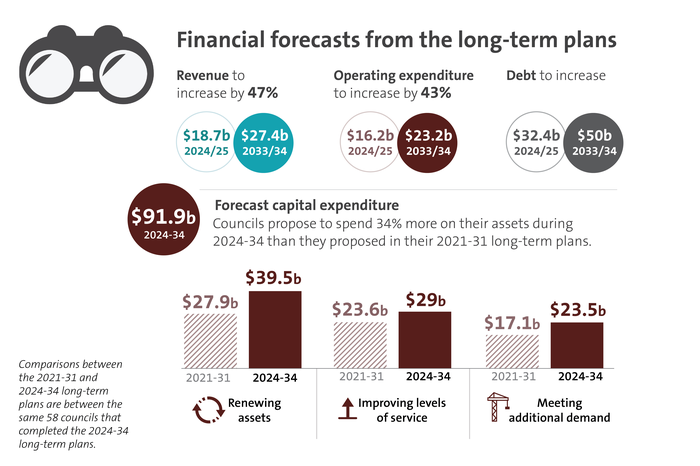Observations from our audits of councils’ 2024-34 long-term plans

Summary of our report
Councils use long-term plans to set out how they intend to provide services and maintain and renew assets, how much these activities will cost, and how they will be funded – usually through a combination of rates, central government funding, and debt.
Councils’ planned rates increases in the 2024-34 long-term plans are significantly higher than in previous long-term plans. In our view, it is more critical than ever that the assumptions underlying long-term plans are supported by evidence and form an appropriate basis for calculating the rates charged to communities.
Councils undertook their long-term planning during significant uncertainty about how water services will be owned, managed, and provided, how transport and roading would be funded, how the Local Government Act 2002 may change, and how they would be affected by policies for improving funding and financing for infrastructure, replacement legislation for the Resource Management Act 1991, and a framework for “Regional Deals”.
Despite the uncertainty, most councils were able to meet legislative requirements and time frames. This is a significant achievement.
What's in this report?
Our audits of 2024-34 long-term plans
We discuss why councils prepare long-term plans, the context for councils' 2024-34 long-term plans, and our audit work on long-term plans.
Trends in financial and infrastructure strategies
Financial strategies and infrastructure strategies are the core components of long-term plans. We discuss some of the trends we have seen in the plans, drawing on information in these strategies.
Conclusion
The changing operating context for local government highlights the importance of a strong strategic and agile approach to long-term planning. We continue to recommend a review of the required content for long-term plans so they remain fit for purpose and focus on what matters most to communities.
